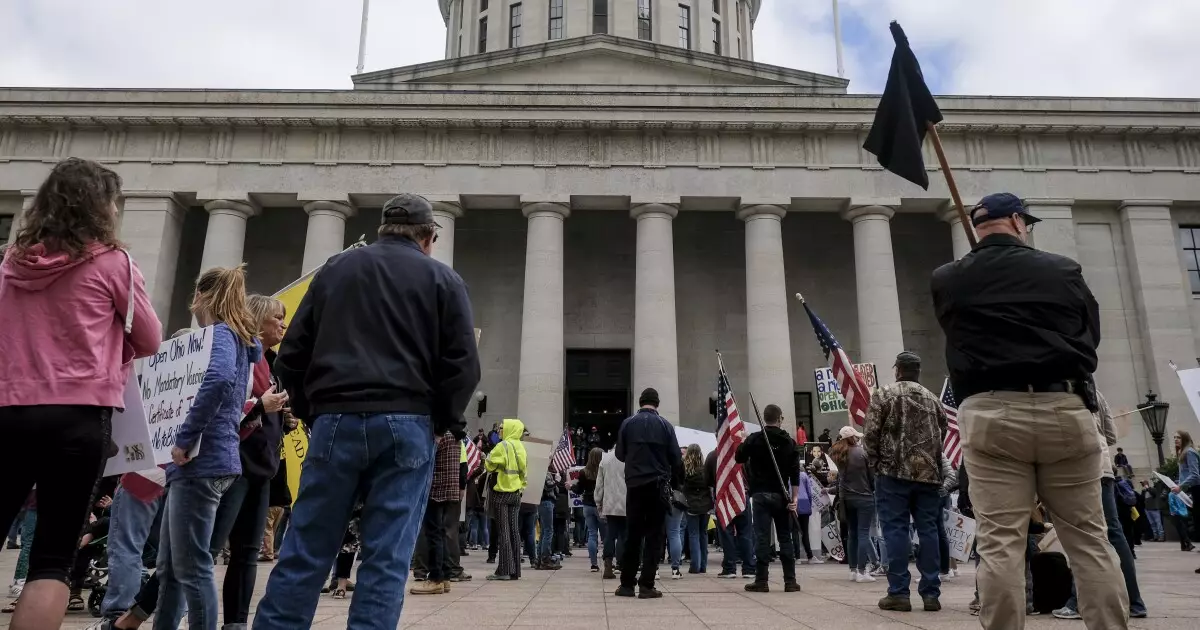In an age where investments in education should be prioritized to secure a brighter future for our children, the recent decision by the Ohio House to impose a 30% cap on school districts’ carryover balances stands as a troubling paradox. While proponents of the cap argue that it’s a necessary measure to relieve overburdened taxpayers amidst rising property taxes, its implications on public education signal a reckless disregard for the very students that state policies are meant to serve. This isn’t just about numbers on a spreadsheet; it’s about real lives, dreams, and opportunities being sacrificed at the altar of financial mismanagement.
The argument put forth by House Finance Chair Brian Stewart, a Republican from Ashville, suggests that a 30% reserve balance represents prudent fiscal responsibility. However, to limit school districts in this way entirely fails to acknowledge the unpredictable nature of educational funding and the necessity for a financial cushion. Education is not merely a line item on a budget; it’s a dynamic entity that requires flexibility and foresight. It is almost laughable how this rationale falls short when addressing the reality of educational funding shortages amidst a backdrop of rising property values that seem to spur an unanticipated influx of cash to school districts.
A Misguided Approach to Taxpayer Relief
Critics, including advocates from the Ohio Federation of Teachers and Policy Matters Ohio, have rightly pointed out that this cap is more of a setback than a relief strategy. The notion that school districts must return excess funds to property owners doesn’t just overlook the needs of our children; it actively undermines the financial stability of the very organizations responsible for their education. The cap is poised to deter school districts from maintaining necessary reserves, forcing them to dip into their “rainy-day” funds in a time when educational resources are needed the most.
Moreover, this policy blurs the lines between property tax relief and responsible education funding, creating a toxic environment where education budgets could depend more on political whims than on enduring needs. Such a flawed approach could potentially lead to an increase in property tax levies, as districts scramble to make up for lost funding and secure the resources they need to educate children effectively.
The Cost of Shortsighted Legislation
The implications of the House’s decision extend far beyond mere budgetary constraints. The predictable uncertainty of state funding—already exacerbated by federal intervention and previous legislation—means that school districts require adequate reserves to navigate unpredictable fiscal landscapes. The last-minute amendments suggested by various legislators illustrate a profound misunderstanding of the stakes at play, particularly for the 90% of Ohio students who rely on public education.
When key figures in state government publicly claim that funding isn’t available for necessary educational programs while simultaneously advocating for new scholarship initiatives for non-chartered, private schools, the message becomes undeniably mixed. This contradiction exposes a troubling trend: the very funds that could enhance public education are instead being channeled into privatized education. Such choices raise fundamental questions about priorities and illustrate the growing gap between rhetoric and action in Ohio’s educational landscape.
Public Outrage and a Call to Action
Public outcry is growing as parents, teachers, and community members recognize the repercussions of these shortsighted decisions. The acknowledgment that the Fair School Funding Plan promised to address critical funding gaps should not be overlooked. Instead, it is concerning to see the legislative body retreat from a solid plan that aimed to establish a fair and consistent funding structure, only to foist an array of new school funding schemes that lack comprehensive oversight or strategic planning.
Keeping in mind the Ohio Supreme Court’s repeated affirmations of the state’s educational funding inadequacies, it is alarming to witness ongoing legislative reluctance to address the systemic issues that have existed for decades. This 30% cap is nothing more than a half-hearted attempt at addressing property tax concerns, placing the burden of financial prudence onto the backs of those who should be our brightest hope—the children of Ohio.
As we analyze this troubling trend, we must become advocates for a more equitable education system. We must demand that our representatives focus on long-term solutions over quick fixes and prioritize education properly. If this current trajectory remains unchanged, the only real winners in the budget struggle will be future legislators who continue to sidestep their responsibilities to the next generation, ultimately leading to a society where education is less about empowering individuals and more about cutting costs at the expense of our children’s future.

